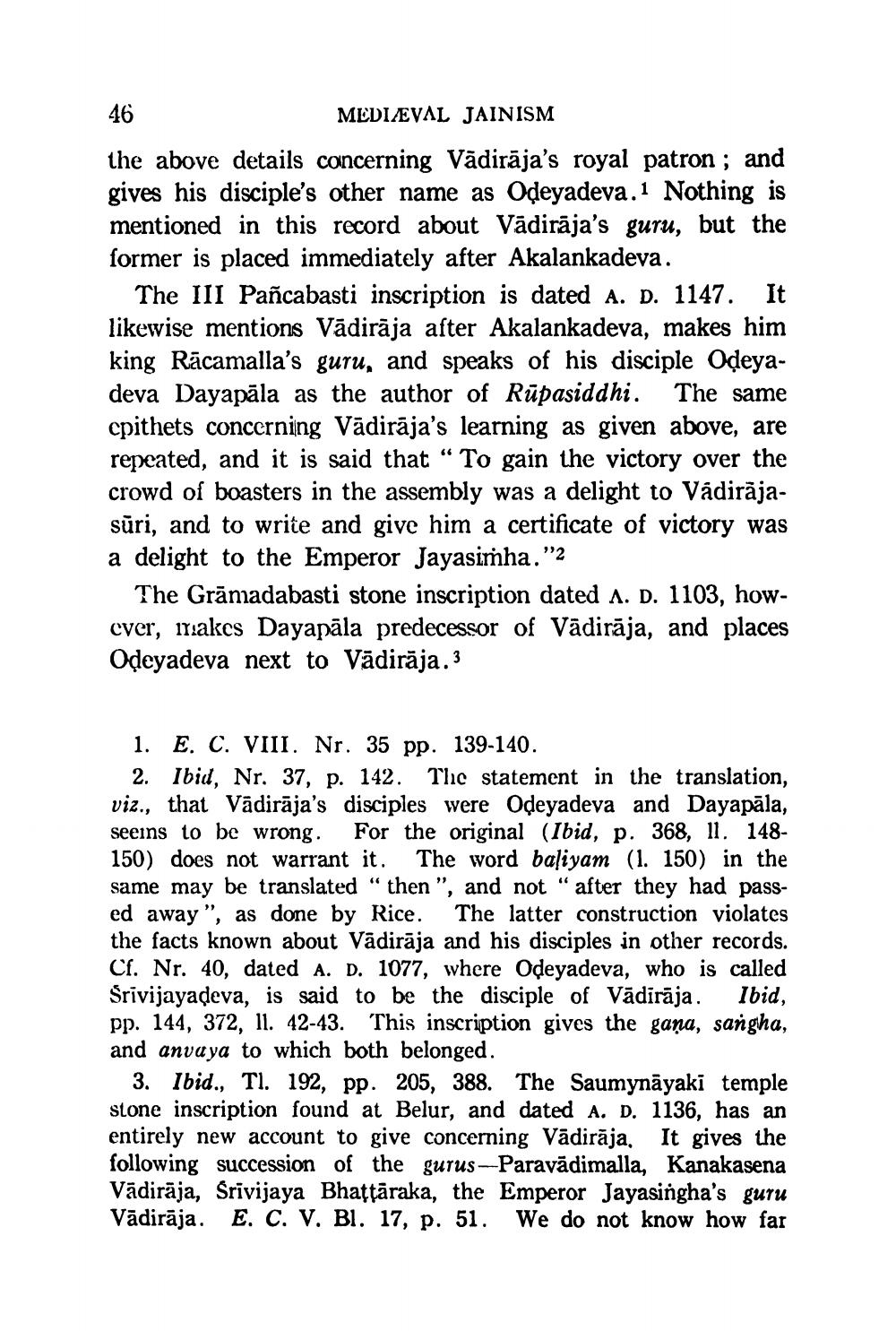________________
46
MEDIÆVAL JAINISM the above details concerning Vădirāja's royal patron; and gives his disciple's other name as Odeyadeva.1 Nothing is mentioned in this record about Vădirāja's guru, but the former is placed immediately after Akalankadeva.
The III Pañcabasti inscription is dated A. D. 1147. It likewise mentions Vādirāja after Akalankadeva, makes him king Rācamalla's guru, and speaks of his disciple Opeyadeva Dayapāla as the author of Rūpasiddhi. The same cpithets concerning Vădirāja's learning as given above, are repeated, and it is said that “ To gain the victory over the crowd of boasters in the assembly was a delight to Vadirajasūri, and to write and give him a certificate of victory was a delight to the Emperor Jayasimha."2
The Grāmadabasti stone inscription dated A. D. 1103, howcver, irakcs Dayapāla predecessor of Vādirāja, and places Opeyadeva next to Vādirāja. 3
1. E. C. VIII. Nr. 35 pp. 139-140.
2. Ibid, Nr. 37, p. 142. The statement in the translation, viz., that Vädirāja's disciples were Odeyadeva and Dayapāla, seeins to be wrong. For the original (Ibid, p. 368, 11. 148150) does not warrant it. The word basiyam (1. 150) in the same may be translated "then ", and not "after they had passed away", as done by Rice. The latter construction violates the facts known about Vădirāja and his disciples in other records. Cf. Nr. 40, dated A. D. 1077, where Odeyadeva, who is called Srivijayadeva, is said to be the disciple of Vādīrāja. Ibid, pp. 144, 372, 11. 42-43. This inscription gives the gana, sangha, and anvaya to which both belonged.
3. Ibid., Ti. 192, pp. 205, 388. The Saumynāyaki temple stone inscription found at Belur, and dated A. D. 1136, has an entirely new account to give concerning Vădirāja. It gives the following succession of the gurus --Paravādimalla, Kanakasena Vādirāja, Srivijaya Bhattāraka, the Emperor Jayasingha's guru Vādirāja. E. C. V. Bl. 17, p. 51. We do not know how far




